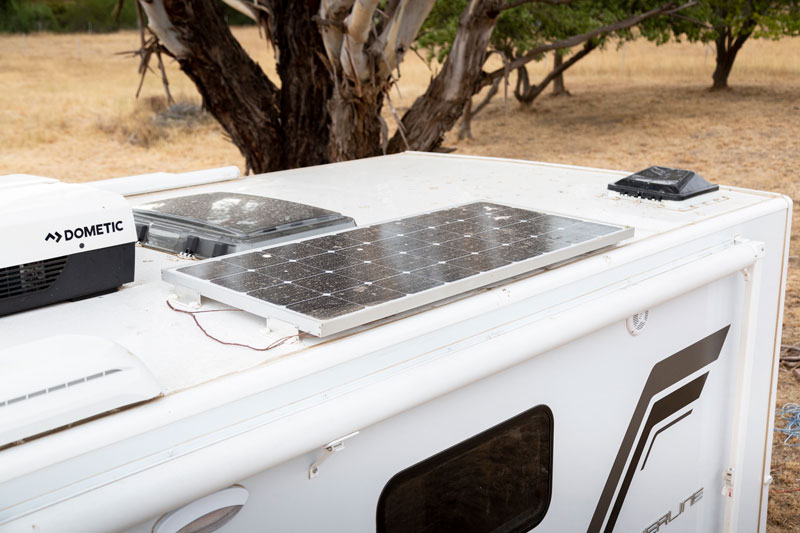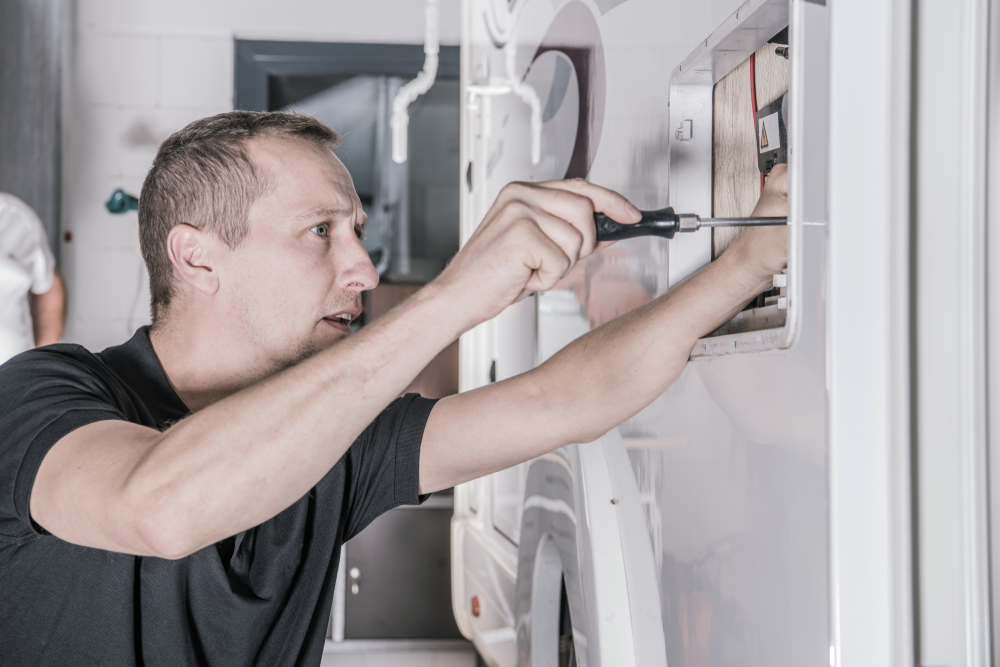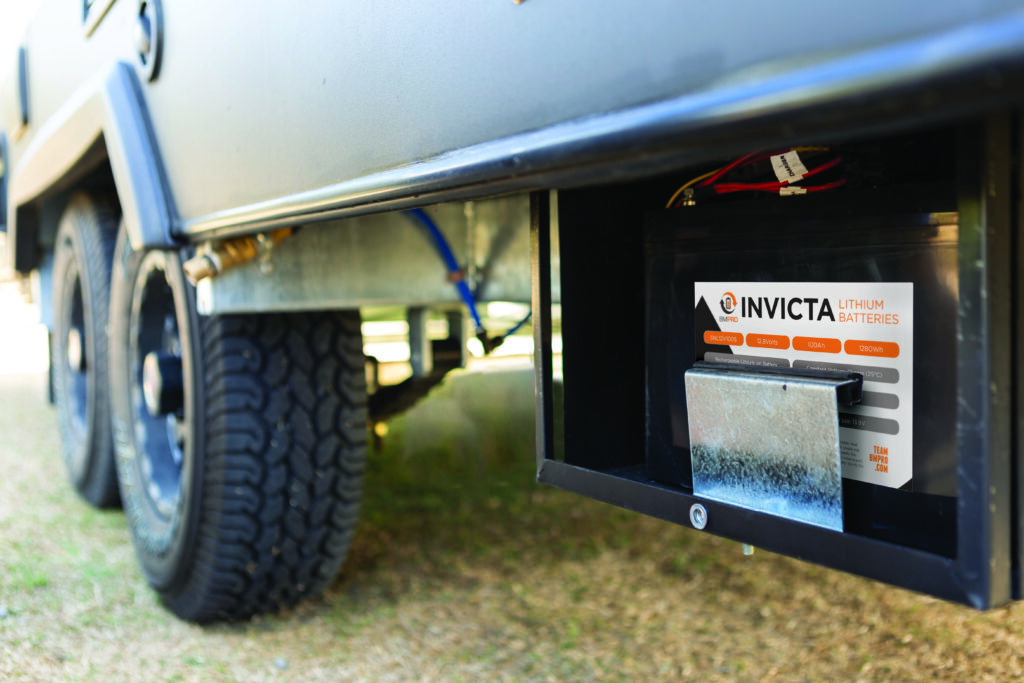
12V Guru – Optimising your Solar Power System
Solar Panels installed on your vehicle roof? Our 12V Guru discusses how to optimise their performance in place of buying more panels
I have noticed many new caravans now have their electrical batteries installed externally, in a metal box attached to the caravan chassis.
I’m assuming this must be a new safety requirement to safeguard sleeping occupants against off-gassing batteries?
This arrangement appears beneficial since it would be safer for the occupants and will allow for more storage space within the caravan? However, I’d be grateful to know of any maintenance issues associated with this new battery set-up? (E.g temperature extremes, potential theft, off-roading clearance, and maintenance checks?)
Thanks,
Anthony
Hi Anthony and thanks for your question – a great observation.
You are correct that the industry and standards in the Australian RV space are continuing to improve all the time and as such, caravan manufacturers will move to storage of lead-acid batteries (AGMs) outside of the living space. As you would be aware when charged too fast, AGM batteries can build up hydrogen faster than its own ability to be absorbed back into the glass mat inside the battery. The batteries have a small vent normally located near the top that under the right pressure (1-2PSI) allows toxic hydrogen gases that are excessive to vent to the outside atmosphere. And this is where the problem begins …
Storage is at a premium inside caravans, so manufacturers normally only allow a small cavity for the battery either under the bed or under a seat in the dining area. These spaces are not always vented to the interior or exterior of the van which means that this venting could create a build-up of dangerous hydrogen gas which with the right conditions and become an explosive flammability hazard. This issue is further exasperated when travelers fill every spare pocket of space with “essentials” such as spare towels, pillows etc which block that ventilation that was installed during manufacturing. Therefore, in light of the above-mentioned safety aspects, manufacturers are moving towards storage of lead-acid batteries on the outside of the RV’s.
Strong steel fabricated battery lockers are now being added to chassis frames and it is critical to ensure that these are not only well made but also can secure the battery to prevent damage from movement and vibration. When considering purchasing a van check to see how the battery has been secured into the external locker. A battery that can be moved by a simple finger poking through the metal frame means that on-road it will certainly be subject to excessive wear and tear due to vibration. Inside the plastic case of the battery are suspended glass mat separators and lead plates which are positioned vertically. Excessive vibration or external physical shock can cause these to break and create an internal short circuit thus damaging the batteries. Often, we see adding solid rubber around the base or sides of the battery can prevent this vibration from becoming an issue.
We wouldn’t expect that securing of the batteries from theft is a big issue but guess you can never be too sure. Not an easy task for a would-be thief to climb under a van and manouevre close to a 30kg battery from its enclosure, but as you can never be too sure such a latch and padlock will visually and physically deter most.
Maintenance of your battery will substantially increase when compared to a battery stored inside with the potential of corrosion of terminals and cabling which are now heavily exposed to the elements. Dust and grime naturally build up on the underside of any vehicle from tyres, the road, and general weather or road conditions. With batteries stored on the outside of the caravan regularly inspecting for any build-up at the battery, connections will be critical as the slightest loose connection will allow buildup within the connection, reducing good clean secure electrical connections. Be conscious also of the potential degradation of cable sheathing for the same reasons. Regular checking of connections and overall condition is definitely recommended.
As to clearance on the underside of your chassis you should find that smart manufacturers have located the battery locker where it is afforded some protection from the environment, easily accessible for battery changeover or maintenance, and is located as close to chassis frame as possible maintaining adequate clearance.
Safe travels,
12V Guru
Like this post? Share it!

Solar Panels installed on your vehicle roof? Our 12V Guru discusses how to optimise their performance in place of buying more panels

Looking at installing your own 12V products such as a DC-DC charger and shunt? Our 12V Guru discusses connectors and what you need to know here

This is a guide to help understand the requirements of the new standard in relation to lithium battery

© 2020
3 thoughts on “12V Guru – External Battery Storage”
Does this rule apply to all batteries or just agm?
The reason I ask is some lithium batteries are not rated to get wet ie are not ip 67
As lithium batteries contain electronics on the bus having them exposed to the elements is not a good idea
G’day Anthony, an interesting topic. Our batteries are mounted externally on a falloff road caravan. Security hasn’t been an issue and neither has off road damage. Our batteries are sealed so, maintenance is not a major issue. The issue I do have is access as they are quite high on the chassis frame yet low to the ground which makes it awkward for some of us older caravanners to get to.
Bruce and Marg…Baby Boomers On The Road…
My off road caravan has a galvanised steel sheet under the floor and the battery boxes are welded to the chassis, the top of the batteries were quite close to the under side of the floor, the batteries were removed by undoing 2 screws and removing a panel on the battery box. When I attempted to slide a battery out the cables attached to the terminals were stopping it. I used a spanner to loosen a terminal when the spanner came into contact with my wedding ringing the ring touched the steel floor above, the ring disintegrated and my finger was badly burnt. Lesson learned always undo the negative terminal first. I have now installed Lithium batteries inside the van best thing I ever did, much safer.